Toggle Categories
Get Instant Support
Choose your preferred way to connect with our team
-
Get Free Quote Fill out form for detailed pricing
-
Send Email Detailed inquiry support
-
WhatsApp Quick mobile chat
Response Time
Within 8 hours on working days, 24 hours on holidays
Hive Stand

Plastic Bee Hive Stand for Beekeeping
Item Number : BHY-1

Metal Hive Feet Bee Hive Stand for Ant Protection
Item Number : BHY-2

Metal Bee Hive Stand Bee Box Stand for Beekeeping
Item Number : BHY-3

Professional Ant-Proof Beehive Stand with Integrated Moat for Beekeeping
Item Number : BHY-4
REQUEST A QUOTE
Our professional team will reply to you within one business day. Please feel free to contact us!
Related Articles

The Beekeeper's Nightmare: Why Moving Your Hives Can End in Disaster—And the Design That Prevents It
Discover the critical design flaw that makes hive relocation so risky. Learn why framed Langstroth hives are essential for mobile commercial apiaries.

The Unseen Architecture: Why Your Hive Size Defines Your Apiary's Future
Choosing between an 8-frame and 10-frame hive isn't just about capacity; it's a fundamental decision about ergonomics, scale, and philosophy.

How to Choose the Best Beehive Type for Your Climate and Terrain
Learn how to choose the best beehive type for your climate and terrain, with insights on insulation, durability, and hive performance.

How to Choose and Care for Beekeeping Protective Gear That Works
Learn how to choose and maintain beekeeping protective gear for safety and comfort in hive inspections. Essential tips for suits, veils, gloves & boots.

How Handheld Queen Marking Cages Revolutionize Beekeeping Efficiency and Bee Welfare
Handheld queen marking cages boost beekeeping efficiency & queen welfare with ergonomic design, precision marking, and faster colony recovery.

Graft-Free Queen Rearing: Jenter vs. Nicot Systems Compared
Compare Jenter vs. Nicot graft-free queen-rearing systems: mechanics, costs, and setup tips for beekeepers. Choose the best for your apiary.

How Modern Bee Suits Combine Safety and Comfort Through Smart Design
Discover how modern bee suits blend advanced fabrics and ergonomic design for unbeatable protection and comfort in beekeeping.

How to Time Hive Insulation for Maximum Winter Bee Survival
Learn when and how to insulate beehives for winter survival based on freeze patterns and bee biology. Boost colony survival rates with precise timing.

How to Choose the Best Hive Stand Material: A Beekeeper's Guide to Cost, Durability, and Protection
Learn how to choose the best hive stand material for durability, pest control, and cost. Essential guide for beekeepers.

How to Reduce Honey Moisture: Science-Backed Methods for Beekeepers
Learn science-backed methods to reduce honey moisture, prevent fermentation, and meet food safety standards for beekeepers and small-scale producers.

Swarm Catching for New Beekeepers: A Step-by-Step Safety Guide to Your First Successful Capture
Beginner's guide to safely catching your first bee swarm—essential gear, techniques, and mistakes to avoid for a successful capture.

How Pollen Traps Transform Beekeeping: From Hive Health to Additional Income
Discover how pollen traps enhance hive health and create income in modern beekeeping. Learn collection science, benefits, and best practices.

Why Langstroth Hives Are the Best Choice for Beginner Beekeepers
Langstroth hives are the best for beginner beekeepers due to modular design, easy inspections, and strong community support. Start your beekeeping journey today!

How to Choose Between Top Bar and Langstroth Hives for Effortless Beekeeping
Compare Top Bar vs. Langstroth hives for beekeeping: ergonomics, swarming prevention, and scalability. Choose the best fit for your apiary goals.

The Professional’s Guide to Honey Refractometer Calibration: Ensuring Quality, Protecting Profit

Strategic Summer Hive Management: Maximizing Flow Super Efficiency While Preserving Colony Health
Optimize Flow Hive summer management with science-backed strategies for maximum honey yield while preserving bee colony health and reducing swarming.

How to Achieve 80% Larval Grafting Success: A Beekeeper’s Step-by-Step Guide
Master larval grafting for 80%+ queen-rearing success with expert tips on tools, colony prep, and environmental control. Ideal for beekeepers & distributors.

How Hive Clips and Buckles Save Beekeepers Time and Effort
Discover how hive clips and buckles save beekeepers time, reduce frame damage, and enhance durability in challenging environments.

How Bee Jackets Outperform Full Suits in Hot Weather Without Sacrificing Protection
Discover why bee jackets offer better heat management, mobility, and cost-efficiency than full suits for beekeepers in hot weather.

How to Determine the Optimal Beehive Stand Height for Comfort and Efficiency
Learn how to determine the optimal beehive stand height for ergonomic beekeeping, reducing strain and improving efficiency. Ideal for Langstroth & top-bar hives.